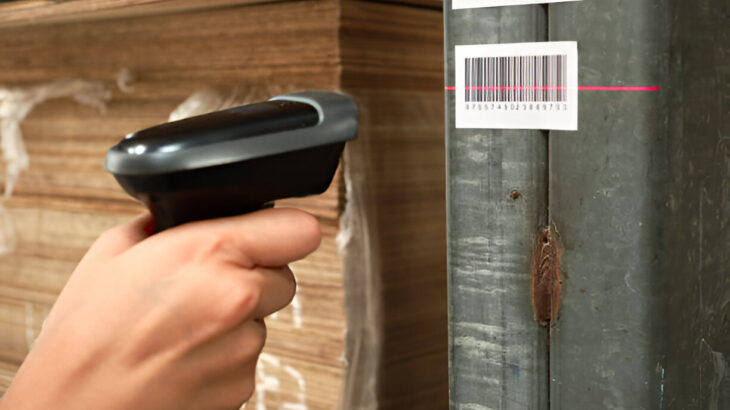Selecting the proper label for your product is not simply an issue of looks—rather, it’s a strategic choice that can affect brand image, shelf appeal, and even compliance. Whether you’re labeling cosmetics, foodstuffs, industrial chemicals, or luxury products, each category requires consideration. From durability to design, this guide outlines the essential considerations to ensure you choose the most appropriate label for your product type.
1- Understand Your Product’s Environment
The key to choosing the correct label is determining the environment in which your product will be used. Will it be refrigerated, frozen, or kept in humid environments? Is the product intended for use outside, where exposure to sunlight, moisture, or extreme temperatures is unavoidable?
For example, food items stored in cold storage need labels that won’t peel off because of condensation. Likewise, chemical containers require abrasion- and corrosion-resistant labels. By considering where and how your product will be stored, shipped, and used, you can limit the suitable label materials and adhesives to provide durability and readability.
2- Material Selection
Label materials are very diverse, and the appropriate selection is greatly determined by the character of your product. Some of the most common materials are paper, polypropylene, polyester, and vinyl. Each of these materials has its advantages:
- Paper labels are inexpensive and suitable for dry, indoor products like the packaging of dry foods or books.
- Polypropylene is water-resistant and durable, which makes it suitable for health and beauty products.
- Polyvinyl and polyester are best suited for industrial uses because they are robust in extreme conditions.
Consider both functionality and aesthetics. If your product is designed as luxury or premium, use high-gloss or textured finishes to add more visual impact.
3- Adhesive Options
Adhesive is usually an afterthought, but it is important to label performance. One wants an adhesive that sticks well to the product surface without lifting, bubbling, or sliding over time. There are various types:
- Permanent adhesives are suitable for applications where the label will remain long-term and operate on most surfaces.
- Removable adhesives permit the label to be peeled off cleanly without residue—perfect for short-term promotions or reusable packaging.
- Freezer-grade adhesives are designed to be used in cold or damp environments, such that labels will remain on in extreme cold temperatures.
Also, think about the substrate—labels will stick differently on glass, plastic, cardboard, or metal. Testing is advised to ensure compatibility.
4- Design and Branding
A label is not only informative but also a vital branding tool. The design must represent your brand identity while clearly communicating important product information. Typography, color palette, imagery, and layout must all coexist in harmony to grab consumer attention and project professionalism.
Functionality does count too—make sure to have key info such as product name, ingredients, expiry date, and instructions for use easily readable. Employ finishes such as matte, gloss, or soft-touch inks to more closely match your brand image in the appearance of the label. Foil stamping or embossing adds a touch of class to prestige products.
5- Compliance and Regulations
Depending on your product type and industry, there could be strict labeling requirements to meet. Food packaging has to meet nutrition label requirements, whereas cosmetics could involve ingredient disclosures and best-by dates. Hazardous chemicals, however, have to meet GHS (Globally Harmonized System) requirements, such as pictograms and warning labels.
Failure to comply can lead to fines or product recall, and it’s therefore essential to remain aware of local and global labeling regulations. Use of a product label supplier with technical expertise can help ensure that product labels comply with all applicable requirements without compromising design integrity.
6- Printing Techniques
The printing technique you use will determine the look, durability, and price of your labels. Some common printing methods are:
- Flexographic printing – Economical for large quantities with a consistent quality.
- Digital printing – Suitable for short runs and customizations, with high-resolution output.
- Thermal printing – Often used for barcode labels and batch numbers.
The type of printing should be suited to your business requirements. For example, if you are consistently updating product versions or SKUs, digital printing is flexible with no need for new plates. If you are producing static high-volume orders, flexographic printing can be more cost-effective.
Conclusion
Choosing the appropriate label for your product type is about weighing functional requirements with brand style. From eco-friendly concerns and material selection to compliance with regulations and visual appearance, every aspect plays a key part in the success of your packaging plan. By taking the time to get to know these elements, you are guaranteed that your label sticks, but more importantly, stands out, instilling confidence, improving attractiveness, and facilitating your brand’s growth within a competitive market.
For companies seeking a stress-free solution, labelsuae.com provides professional advice, premium materials, and custom printing solutions for any industry. If you are facing tough environments, strict regulations, or intricate branding requirements, the team can provide trusted, professional label solutions in no time.
